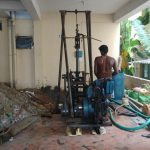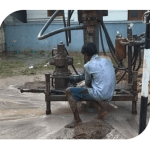Water Conservation: Why and How
Rainwater Harvesting Importance
Rainwater harvesting is an old wisdom that we have forgotten. Regaining it will only save us, fortify us, and make our lives more sustainable. Rainwater collection is the scientific term for collecting rainwater and storing it or recharging ground water.
Around June and September, India’s tropical monsoonal climate gets abundant rainfall, enough to support humans, trees, and rivers for the rest of the year. But for the monsoon season, many regions face water crises or water stress on varying levels even though there is plenty of rainfall.
Every year during the monsoon, India unwinds and enjoys freshwater as rivers begin to flood and ground water levels rise. We have a tendency to forget about the droughts and water stress that we saw just a month or two ago. We would not have to think about water for the remainder of the year if we could just cultivate this freshwater during the monsoon.
Get the finest rain water harvesting services in Chennai!
Piped water supply is used in urban and semi-urban environments. People were apathetic and reckless about rainwater collection as a result they disconnect from natural water supplies. Water scarcity has a strong impact on drinking water supply, irrigation and food processing, industrial production, ordinary people’s everyday activities, and the economy. The disappearance of natural water supplies, the exploitation of all water resources for human use and use, and river damming are all having a negative impact on forests.
Rainwater Harvesting Techniques
Rainwater harvesting techniques are guaranteed to be successful if implemented correctly in accordance with the landscape, topography, geology, and rainfall of the region. Some of the successful strategies that can be applied for collecting rainwater on a person or community level include:
- Borewell Recharging or well recharging
- Rainwater harvesting structures
- Rain Water Harvesting (RWH ) from paved or unpaved areas
- Rejuvenation of local water bodies
Need best-quality rain water harvesting methods in Chennai, India?
1.Borewell Recharging
Overharvesting of water and depletion of the groundwater table is causing borewells to dry out after the monsoon. Borewell recharging is a highly efficient method of replenishing borewells with new rainfall water. In one of the case studies, a borewell that had been drying out in December for several years began producing water again after recharging and continued to do so until May, with just one rainfall. A bore-well that has been recharged seldom runs dry. Underground water tables and aquifers are replenished year after year, holding the bore-well operational. Bore-well recharge also means that naturally treated rainwater is stored in natural water reservoirs, such as aquifers and water tables, for future generations to use.
2.Rainwater harvesting structures
Rainwater harvesting structures should be built anywhere there is land. It can be planned in factories, farms, and private property, among other places. Rainwater harvesting structures may have primary purposes such as groundwater recharge, surface storage, or soil erosion prevention. Water harvesting structures include contour bunds, contour pits, percolation ponds, and gabion walls.
In another case study, one organization faced a water crisis during the dry season and was reliant on water tankers year after year. Using locally available materials, a total of 38 small rainwater harvesting systems were installed. The well began producing water during the year after the first monsoon. Long term, the influence of rainwater irrigation was noticed in the valley, and borewells downstream began yielding water all year. Watering was no longer needed for the area’s cultivated trees, which had previously required watering. The raised water table in the valley was caused by a combination of rainwater irrigation structures and land reforestation.
Need best-quality rain water harvesting methods in Chennai, India?
3.RWH from paved / unpaved area
Rooftops are places where a large amount of high-quality rainwater can be stored. Parking lots and courtyards are two more places where rainwater can be collected. While the water obtained is not of especially high quality, it may be used for secondary uses (e.g., planting, washing) or for recharging the field aquifer.
This can be used in institutes, universities, libraries, factories, apartments, and single residences, among other places. Rainwater may be gathered and used directly or to recharge an aquifer. Many state governments and towns provide grants to encourage its use.
In one of the case studies, a rainwater harvesting device was mounted on the rooftop of an individual house in Mysore. Rainwater was collected and processed in separate tanks for drinking, heating, and bathing. Rainwater harvesting meets about half of the family’s water demand, which is 1.8 lakh lit per year.
4.Rejuvenation of local water bodies
Rejuvenation of local water bodies must be done because they control local microclimates, promote sustainability, aid in nitrogen cycling, and offer a variety of environmental services. When a community’s water supplies are ignored, they eventually deteriorate into a trash dump or vanish under concrete structures.
These bodies of water serve as sponges for rainwater harvesting, underground storage, and flood mitigation during the monsoon season. Per area in India has its own conventional wisdom for storing water in the form of bawdiness, tanks, and ponds. These important rainwater storage systems will be saved if the society works together and is conscious of their importance.
Rainwater mining is a wise decision because it adds to long-term water integrity. It reduces water bills and financial burden. It is a one-time commitment with extremely long-term benefits.
Samy Borewells Rainwater Harvesting System
We, as a country, as a society, and as individuals, must prioritise rainwater harvesting in order to break the vicious cycle of water scarcity. We would not require big dams or water from far away if any city and village begins to save rainfall, either by storing it or ensuring aquifer recharge. We agree that legislative measures and strict adherence to regulations are needed to make rainwater harvesting a reality on a city or town level, however we can begin working on an individual level right now. Rainwater irrigation is an old wisdom that we have forgotten. Regaining it will only save us, fortify us, and make our lives more sustainable.
For recharge structures like borewells, we provide the best borewell services in Chennai, India!





